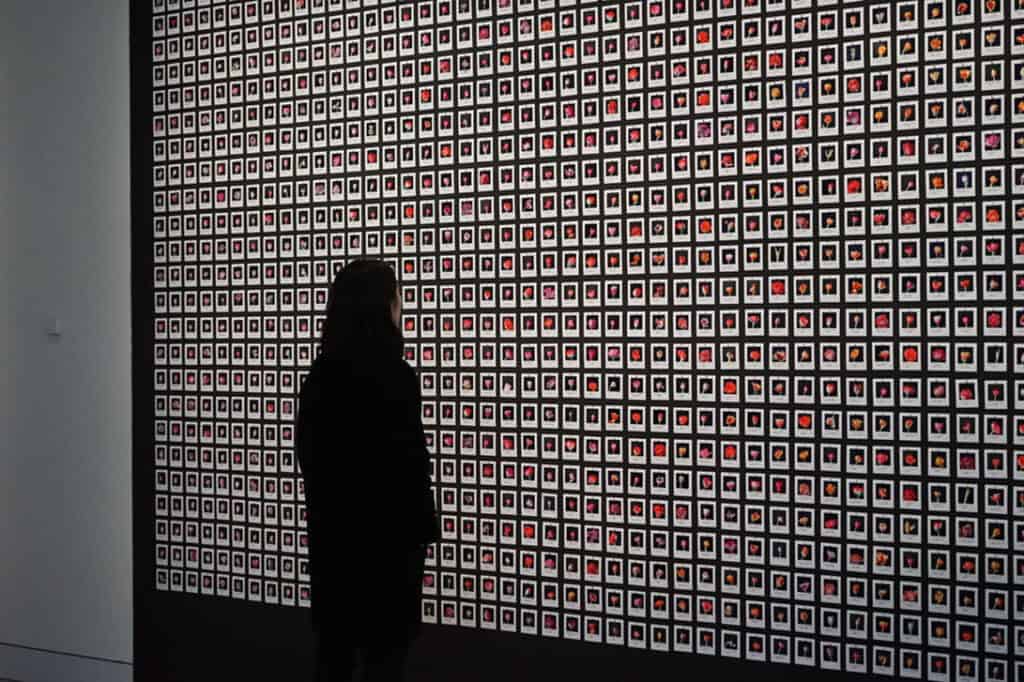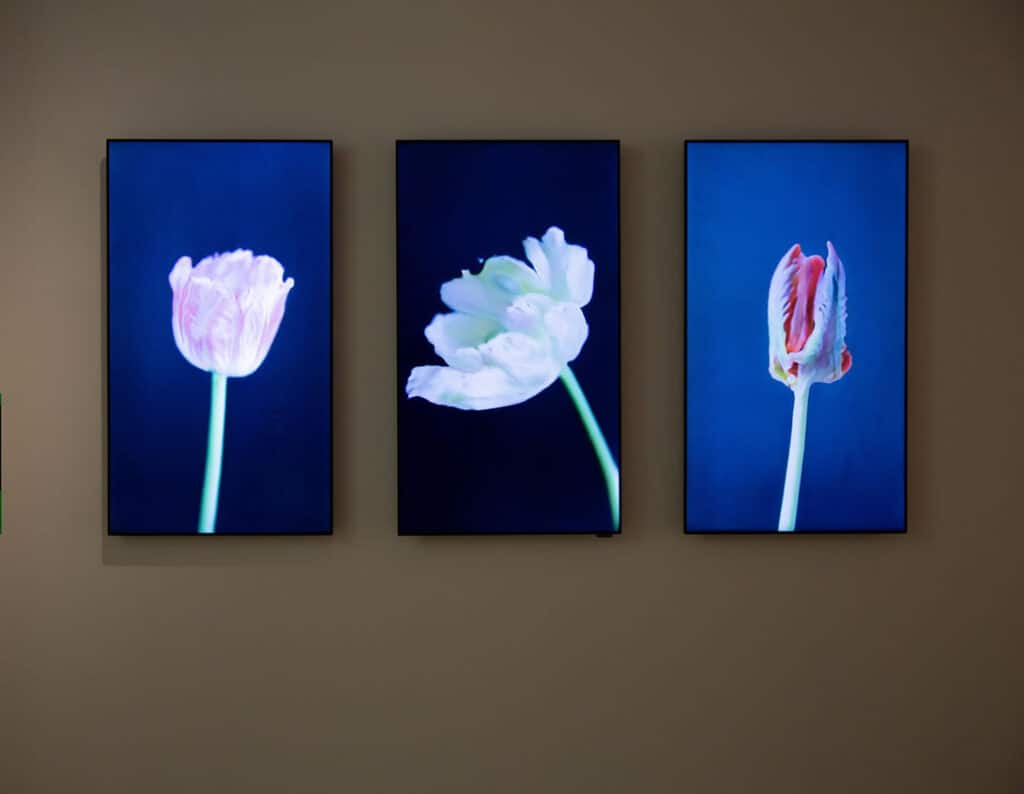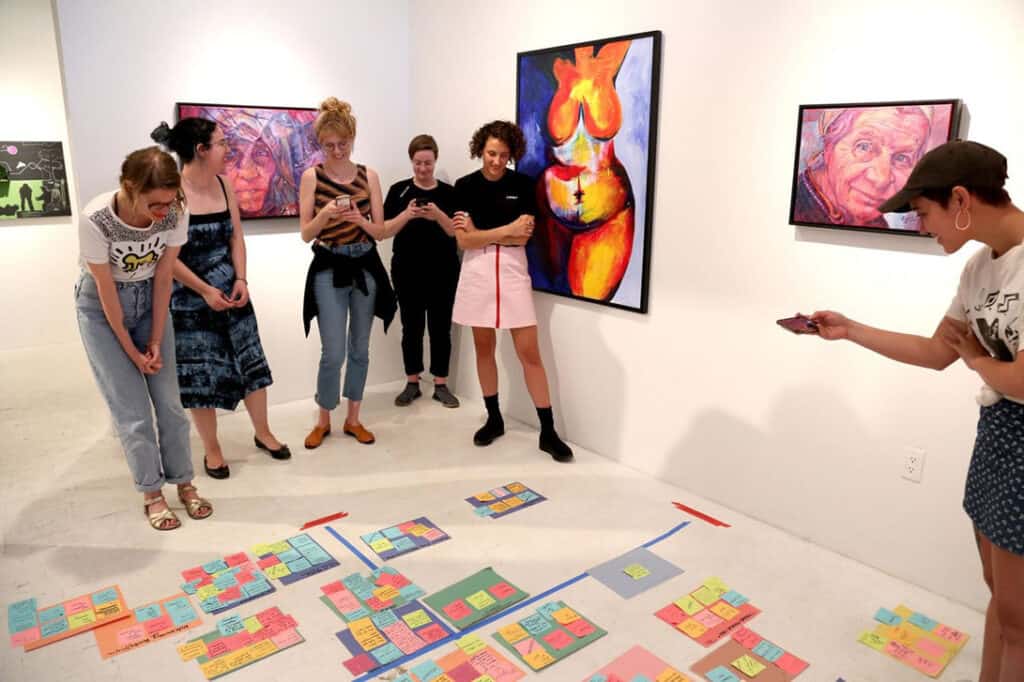Internationally acclaimed artists Caroline Sinders and Anna Ridler have been selected via an open call as the first artists-in-resident of the Experiential AI research theme at Edinburgh Futures Institute. This residency is delivered in partnership with Ars Electronica as part of the European ARTificial Intelligence Lab.
Sinders and Ridler’s proposal responds to the Experiential AI research theme Entanglements – Fair, Moral and Transparent AI. Their concept is to explore hidden human labour in AI, and to make that visible through artistic output, as a way to make transparent and demystify AI systems.
Research theme
Experiential AI is a research theme and group of Edinburgh Futures Institute. Experiential AI investigates the entanglements between humans and machines, and explores how experiential methods can reveal insights about future scenarios for ethical and responsible AI.
Summary of the project
Sinders and Ridler responded to the residency theme of Entanglements – Fair, Moral and Transparent AI by proposing an artistic exploration of the hidden human labour involved in creating an AI.
The artists will investigate the human aspects, inputs and decisions involved in each step of creating an AI by engaging the AI research community in Edinburgh and further afield. They will address the labour rights of ghost workers, the invisible human hands on which autonomous systems depend.
During this residency, Sinders and Ridler will experiment with ways of giving audiences direct experience of AI systems. Both artists create databases as part of their artistic practice, and during the artist residency they will conduct artistic experiments to make human influence in AI transparent.
Sinders and Ridler aim to develop a new work contributing to understanding of topics such as labour and provenance in creating data models. They hope to reveal the entanglements between humans and machines, so people can understand where they have agency.
Indicative research questions
- How can experiential methods be used to explore future scenarios for ethical and responsible AI?
- How can the artists’ practice of creating their own dataset demystify, question or indicate new directions for AI?
- What are the human aspects, inputs and decisions involved in each step of creating an AI?
- How does a creative process or artistic work make human influence in AI systems more transparent?
- How can art inform methodologies and pipelines for AI development in which human labour is acknowledged and honoured?
- How do the artists create new dimensions in their artistic practice through their encounters with AI research?
- How can this project enable other artists to discover new creative ideas and possibilities for their own practice?
- How can art create edge cases (limits, extremes, outliers, provocations) and what can we learn from them?
- Can creative practice help engineers spot gaps in the current concepts, tools and approaches?
- Why do this? What is the motivation for turning ideas into creative works?
Biographies
Anna Ridler
Anna Ridler (b. 1985, UK) is an artist and researcher. She has exhibited at institutions such as the V&A Museum, Ars Electronica, HeK Basel, Impakt and the Barbican Centre and has degrees from the Royal College of Art, Oxford University and University of Arts London. She was a 2018 EMAP fellow and was listed by Artnet as one of nine “pioneering artists” exploring AI’s creative potential. She is interested in working with collections of information, particularly self-generated data sets, to create new and unusual narratives in a variety of mediums, and what happens when things cannot fit into discrete categories. She is currently interested in the intersection of machine learning and nature and what we can learn from history.


The installation images above are from a piece of Ridler’s work called Myriad (Tulips) 2018. This piece is the training set – the information given to the algorithm from which it learns – that was used to create the work, Mosaic Virus. Ten thousand, or a myriad, of photos of tulips were taken over the course of tulip season and each has been categorised by hand, revealing the human aspect that sits behind machine learning.
Ridler developed the theme further in Mosaic Virus 2019 (below) a 3 screen installation in which the appearance of a blooming tulip is controlled by bitcoin price, drawing historical parallels from “tulip-mania” that swept across Netherlands/Europe in the 1630s.

Caroline Sinders (b. 1987, US) is a machine learning researcher and artist obsessed with language, culture and images. Her work explores the intersections between natural language processing, artificial intelligence, abuse, online harassment, and politics in digital, conversational spaces. Her work has been featured in the Victoria and Albert Museum, MoMA Ps1, the Modern Art Museum of Bologna as well as others. She is the founder of Convocation Design + Research an agency focusing on the use of machine learning and design for public good.

This image is from Sinder’s project Feminist Data Set, a multi-year ongoing art project that combines lectures, workshops, and calls to action to collect feminist data. The work asks: can data collection itself function as an artwork? Can it act as a form of protest?
Experiential AI at Edinburgh Futures Institute
Experiential AI is a new research group and theme within Edinburgh Futures Institute and Edinburgh College of Art at the University of Edinburgh. Recent projects include the GROW Observatory, the world’s first continental scale Citizens’ Observatory, and the world premiere of Zizi, a first edition for public displays presented in Edinburgh during August 2019.
Credits
The Experiential AI Pilots 2020 are a project of Edinburgh Futures Institute and Edinburgh College of Art at the University of Edinburgh. They are developed in partnership with the Bayes Centre, Informatics, Edinburgh College of Art and Heriot Watt Robotarium. It is supported by Creative Scotland and the Data-Driven Innovation programme of the South East Scotland City and Region Deal.
This residency is delivered in partnership with Ars Electronica as part of the European ARTificial Intelligence Lab. The artists will spend a period of their residency at the Lab in late summer. The outputs will be presented as part of the Ars Electronica Festival in Linz in September 2020.





